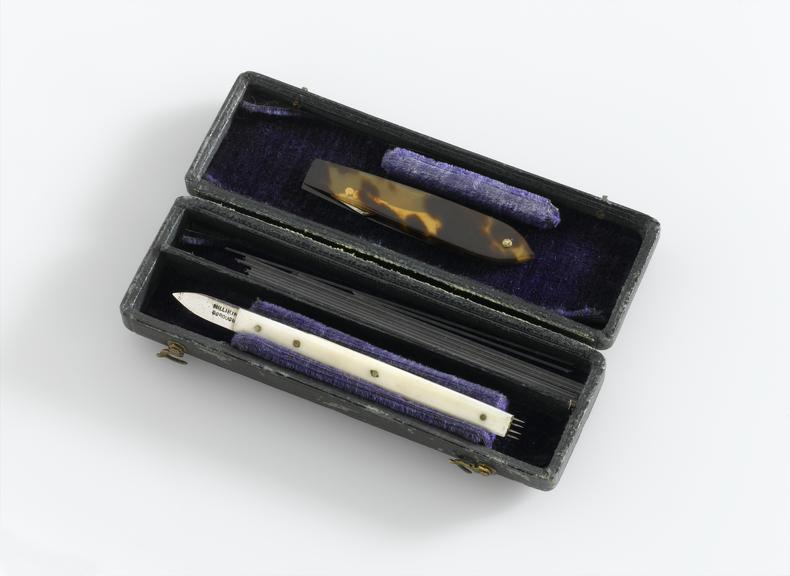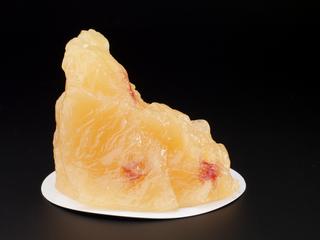
Weir vaccination and lancet, cased, London, England, 1865-1875
- maker:
- John Millikin

Weir vaccination lancet and vaccinator, cased, by Millikin, English, 19th century
Invented by Graham Weir, a doctor, sometime before 1866, this vaccination lancet was used for giving smallpox vaccines by scarification. This was a technique that broke the skin to introduce cowpox lymph material into the body. Cowpox is a milder form of smallpox and an attack of the former gives immunity to the latter. However, vaccination does not give life-long immunity.
The four small blades were used to scratch the skin lightly in a cross-hatch pattern. The sharp pointed blade was used to collect the lymph material from a pustule of a person already vaccinated with cowpox. The blade was also used to apply the lymph material to cuts made in the skin of another person. The lancet with the tortoiseshell case would have been used in the same way.
Details
- Category:
- Public Health & Hygiene
- Collection:
- Sir Henry Wellcome's Museum Collection
- Object Number:
- A600042
- Measurements:
-
overall: 16 mm x 101 mm x 32 mm, .02kg
- type:
- vaccination set




